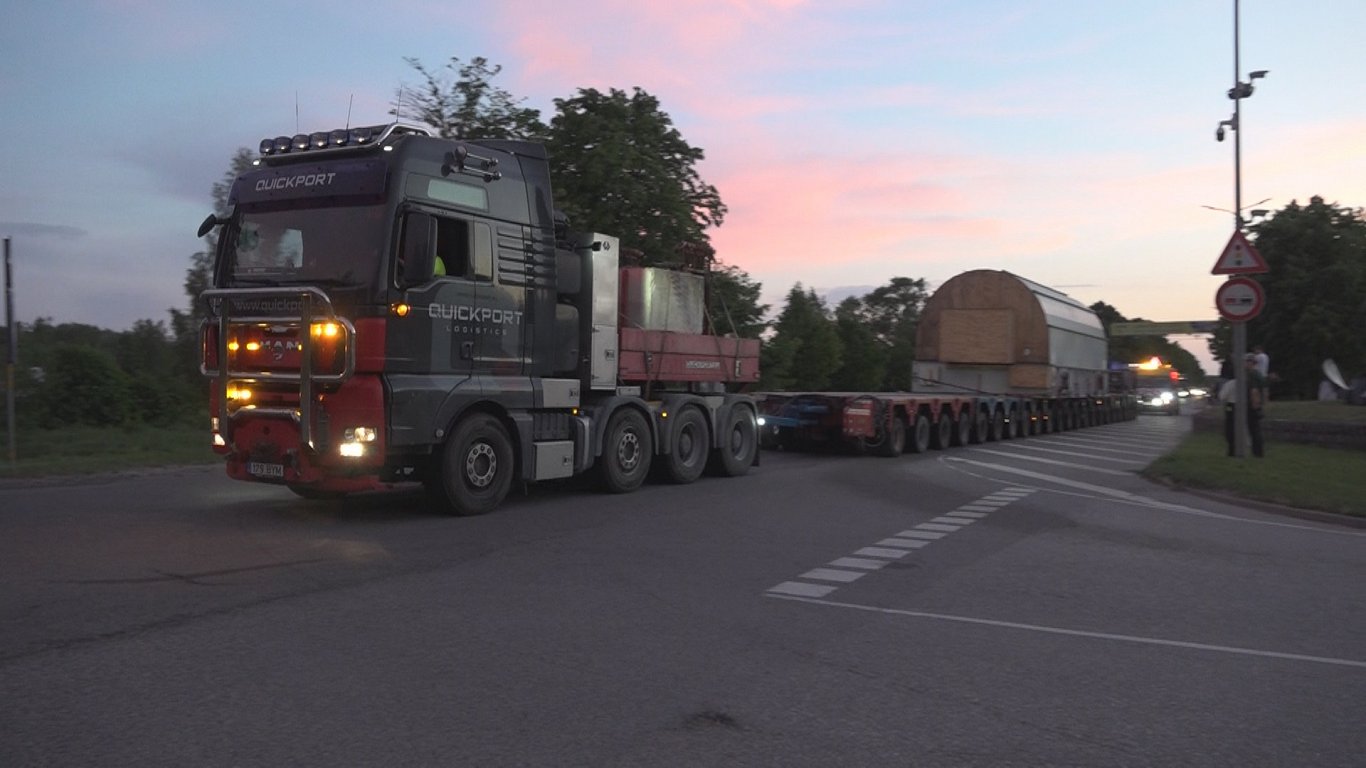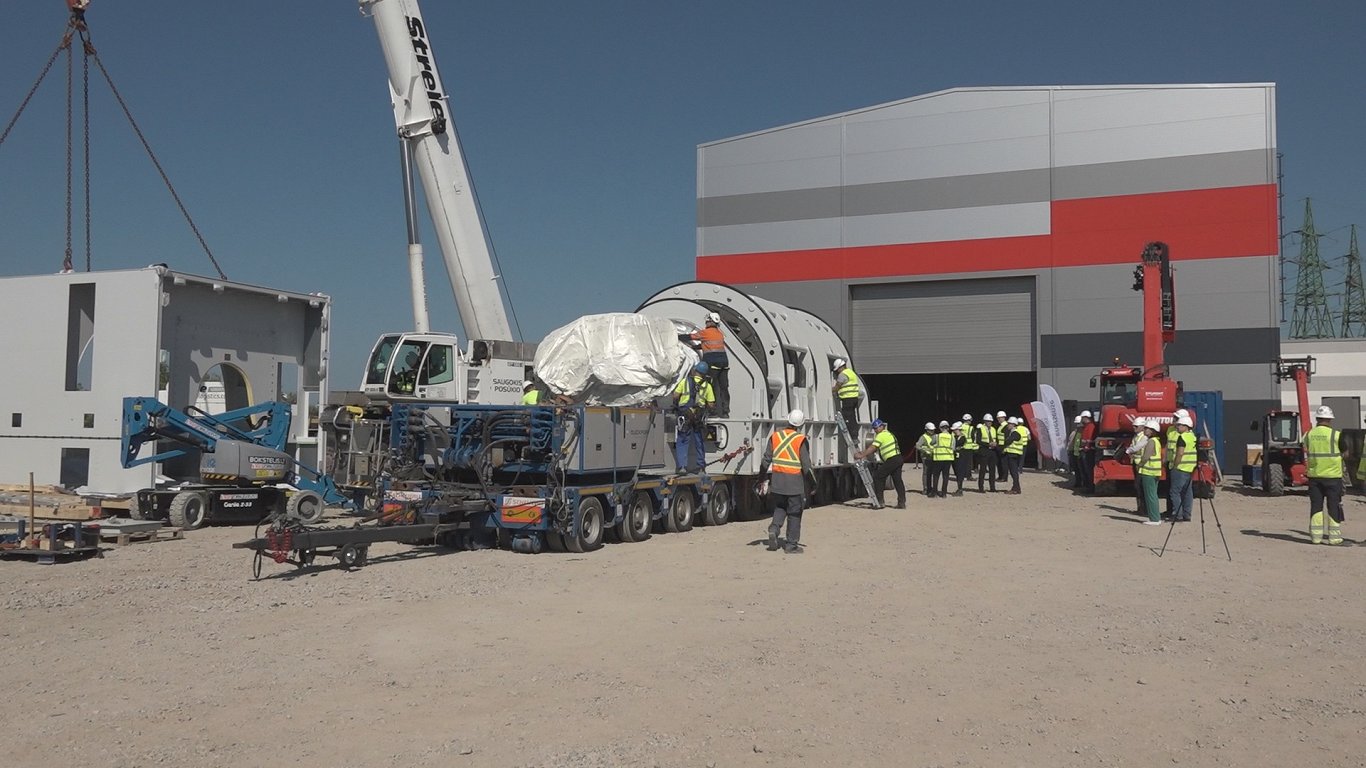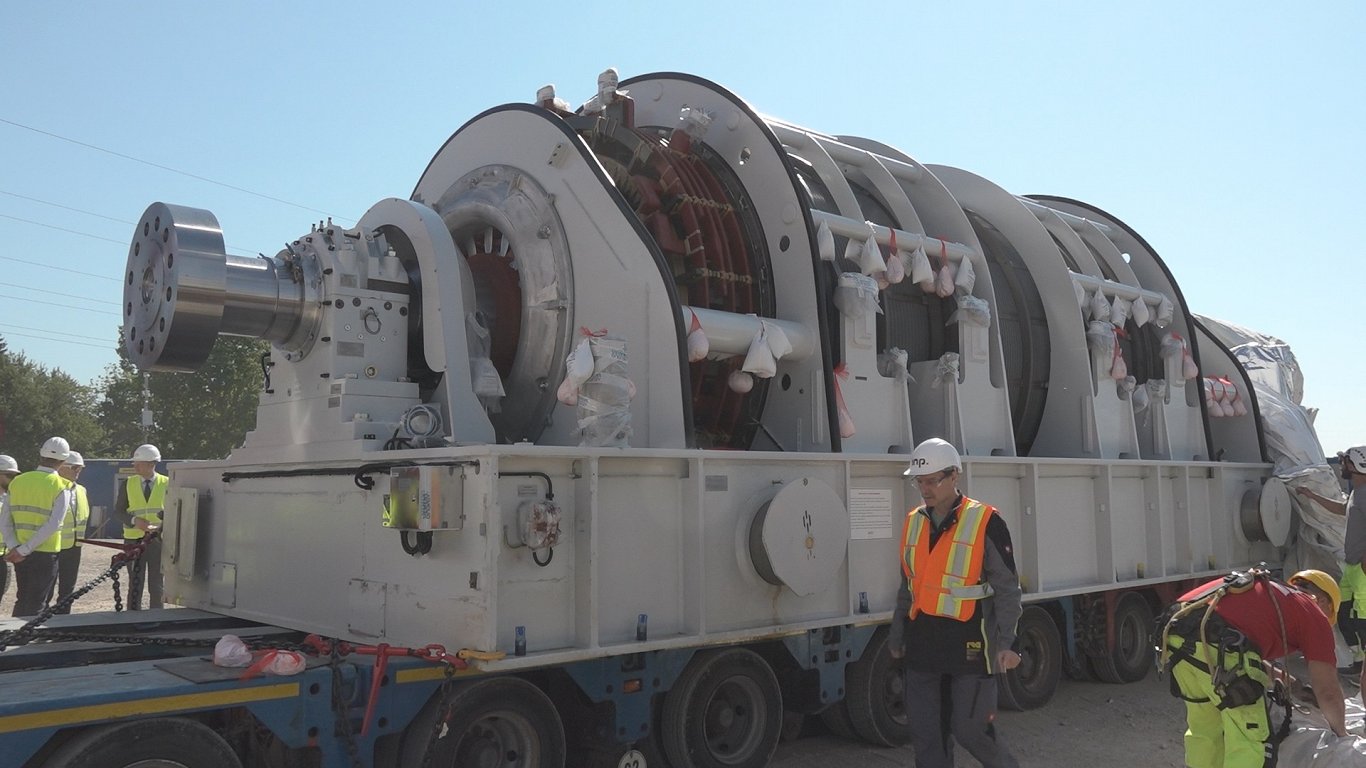On Wednesday, May 22, the equipment was placed in the power station built there to be switched on after tests in February next year, when all three Baltic States will simultaneously disconnect from the BRELL power grid, which currently connects them to the aggressor countries - Russia and Belarus.
A special vehicle from Estonia was hired to take the heavy cargo from the port of Liepāja to Grobiņa. The truck has 22 axles, each with eight wheels, which helped to even out the weight.
As the vehicle was almost 45 meters long, it was escorted by the police, temporarily blocking traffic for other drivers. The movement of the impressive load attracted many visitors, some of whom even arrived with chairs.
Latvia needs the synchronous compensator, manufactured in Germany, to disconnect from the Russian and Belarusian power grids and connect to European networks next year. To this end, two more such compensators will be installed by December - one in Ventspils and the other near Daugavpils.
The total cost will be €114 million, and 75% will be covered by the Connecting Europe Facility.
Climate and Energy Minister Kaspars Melnis (Greens and Farmers Union) said that the high costs would not be felt by consumers on their bills:
"[The plant] will ensure our safety, keep the frequency stable, so that our electricity is stable, so that it doesn't twitch and no light bulb goes out in anyone's home. And there is a lot of European support, so this will not go into the tariff. People will not feel it, that is the most important thing. It is national security, energy security."
On Wednesday, the new plant was inspected by Siemens Energy specialists and then officially installed in a specially built building. Several tests are still to be carried out to make it work automatically, without human presence, confirmed Gatis Junghāns, Member of the Board of the electricity transmission network Augstsprieguma tīkls AS:
"The fundamental change that will be made for the Latvian energy sector is to start controlling the frequency of the system ourselves, which is what the Russian power system does today. So we need additional infrastructure. (...) It is also very important that we add additional renewable energy plants later on - solar parks and wind farms, because as the type of these generations increases, we also need additional sources of inertia - these types of synchronous machines."
A total of 9 such installations are planned in the Baltics - three in each country.
































